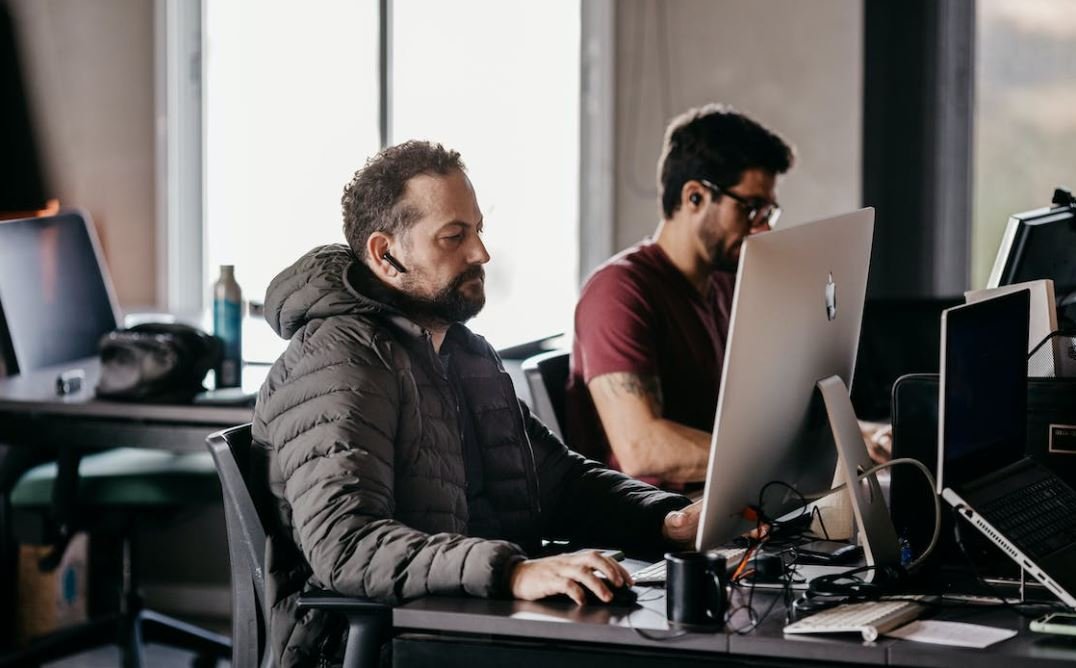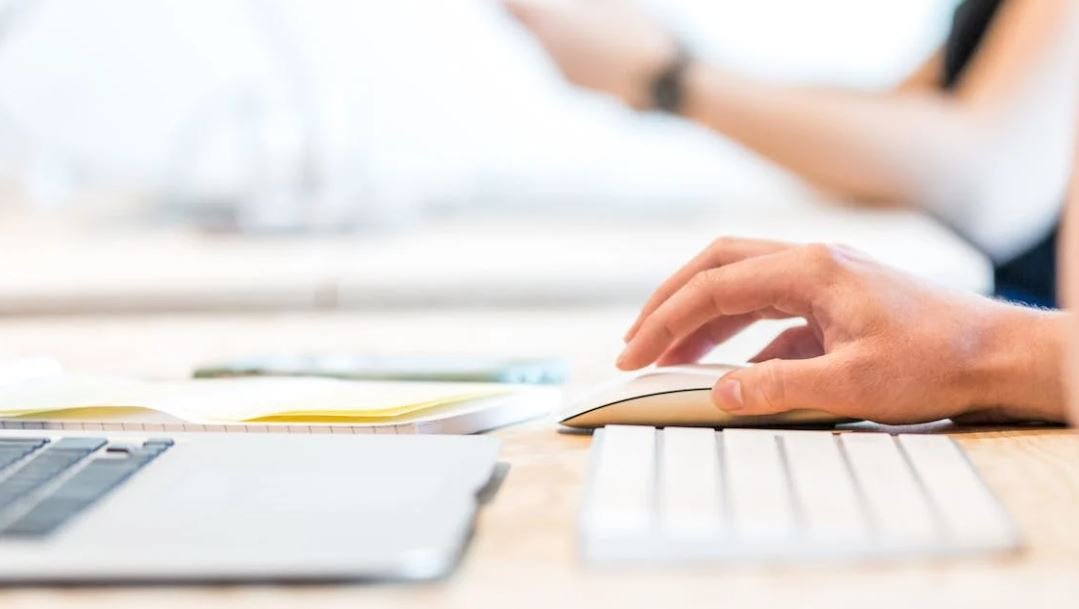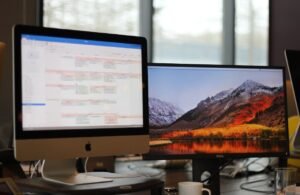Deepfake Face Swap
Deepfake face swap technology has gained significant attention in recent years. It refers to the use of artificial intelligence (AI) and machine learning algorithms to manipulate or replace a person’s face in a video or image with another person’s face. While this technology has potential applications in various fields, it also raises concerns regarding privacy, security, and ethical implications.
Key Takeaways:
- Deepfake face swap technology uses AI and machine learning to replace a person’s face with another person’s face in videos or images.
- It has both potential applications and significant ethical concerns.
- Privacy and security issues arise due to the potential misuse of deepfakes.
- Deepfake detection methods continue to evolve to combat the spread of manipulated media.
One interesting aspect of deepfake face swap technology is its potential application in the entertainment industry. **With deepfakes, actors’ faces can be digitally replaced to create more realistic special effects** or to preserve the appearance of a deceased actor in a film. This technology opens up new possibilities for filmmakers to enhance their creativity and storytelling.
Deepfake face swaps, however, pose serious threats to privacy and security. People’s likeness can be manipulated without their consent, leading to the misuse of their personal information. **Imagine someone using your face in a deepfake video to deceive others or commit a crime**. It raises concerns about identity theft and opens up legal and ethical debates surrounding consent and ownership of one’s digital image.
To combat the potential harm caused by deepfakes, researchers and tech companies are constantly developing detection methods. **One interesting approach is the use of deep neural networks to identify inconsistencies in facial expressions, blinks, or other subtle anomalies that indicate a deepfake**. There is an ongoing effort to enhance these detection techniques to distinguish between real and fake videos and images.
Deepfake Face Swap: Potential Applications
Deepfake face swap technology has various potential applications beyond entertainment. Here are a few examples:
- Preserving historical figures or enhancing documentaries by recreating their facial expressions and movements.
- Creating realistic computer-generated avatars for virtual reality experiences.
- Assisting forensic investigations by providing enhanced visualization and reenactments.
Deepfake Face Swap: Ethical Concerns
With great power comes great responsibility. Deepfake face swap technology raises ethical concerns, including but not limited to:
- Identity theft and misrepresentation.
- Privacy infringement and potential harassment.
- Damage to credibility and trust in digital media.
- Impact on politics, including election interference and disinformation campaigns.
Deepfake Face Swap Detection Methods
Multiple detection methods are being explored to combat the spread of deepfake face swaps. Here are three noteworthy techniques:
| Method | Description |
|---|---|
| Forensic Analysis | Examining video and image artifacts to detect any signs of tampering using advanced algorithms and image processing techniques. |
| Lip-sync Examination | Analyzing lip movements and comparing them to the accompanying audio to identify any discrepancies, as deepfake manipulations often struggle with accurate lip-sync. |
| Facial Landmark Tracking | Tracking key facial landmarks and analyzing their consistency to identify unnatural movements or discrepancies between the original and manipulated face. |
Conclusion
Deepfake face swap technology has the potential to revolutionize the entertainment industry and enable advancements in various fields. However, it also raises significant ethical concerns related to privacy, security, and the manipulation of personal information. As the technology evolves, so do the efforts in developing robust detection methods to protect against the misuse of deepfakes and maintain the integrity of digital media.

Common Misconceptions
Misconception 1: Deepfake Face Swaps Are Always Easily Detectable
One common misconception about deepfake face swaps is that they can always be easily detected. While detection techniques are improving, some deepfake videos can be incredibly realistic and difficult to distinguish from real footage.
- State-of-the-art deepfake algorithms can generate highly convincing facial expressions and movements.
- Deepfake creators often use advanced techniques to blend the swapped face seamlessly into the video, making it hard to detect any inconsistencies.
- Deepfake detection tools are continuously evolving, but there is still a constant cat-and-mouse game between detecting deepfakes and developing more sophisticated forgery methods.
Misconception 2: Deepfakes Are Mainly Used for Harmful Purposes
Another common misconception is that deepfakes are predominantly used for malicious purposes, such as spreading misinformation or creating non-consensual explicit content. While these harmful applications do exist, it is important to note that deepfakes can also be used for positive and creative purposes.
- Deepfake technology has been utilized in the film industry to recreate deceased actors, bringing them back to the screen for nostalgic purposes.
- In the field of research, deepfakes are used to simulate human behaviors and expressions, aiding in the study of psychology and human-machine interaction.
- Deepfakes have also been employed for harmless entertainment, such as face swapping in comedic videos or impersonating celebrities for fun.
Misconception 3: Deepfakes Can Only Be Created by Experts
Many people believe that deepfake creation is a complex process that can only be undertaken by experts or those with advanced technical skills. However, with the availability of user-friendly deepfake software and online tutorials, almost anyone can create a deepfake with minimal effort.
- Various easy-to-use applications and online platforms have made it possible for individuals without technical expertise to generate deepfakes.
- Step-by-step tutorials and guides are readily available, providing detailed instructions on how to create a convincing deepfake.
- The accessibility of deepfake creation tools has raised concerns about potential misuse and the need for responsible usage.
Misconception 4: Deepfake Face Swaps Are Only a Recent Phenomenon
There is a misconception that deepfake face swaps are a relatively new phenomenon. However, the development of deepfake technology has been a gradual process, with advancements being made over several years.
- Deepfake algorithms have been evolving since around 2014, and early experiments involved swapping one face onto another without much refinement.
- As computing power and machine learning techniques improved, deepfake face swaps became more convincing and accessible.
- The widespread awareness and concern regarding deepfakes have only emerged more recently with the increasing dissemination of manipulated videos on social media platforms.
Misconception 5: Deepfakes Are the Sole Cause for Misinformation
While deepfakes can contribute to the spread of misinformation, it is important to recognize that they are just one tool among many that can be used to deceive people. Deepfakes alone do not account for the entirety of misinformation-related issues.
- Other techniques, such as photo manipulation, deceptive audio editing, and text-based disinformation also play significant roles in the spread of misinformation.
- Educating the public about critical thinking, information verification, and media literacy can help individuals discern between real content and manipulated media.
- Combatting misinformation requires a multi-faceted approach that addresses the broader context in which deepfakes are used.

Introduction
Deepfake face swap is a technique that uses artificial intelligence to replace one person’s face with another in a video or image. This technology has raised concerns about the potential for misuse and deception. In this article, we will explore various aspects of deepfake face swap, including its impact on society, the technology behind it, and some notable examples.
1. Famous Deepfake Face Swaps
This table showcases some well-known deepfake face swaps in the entertainment industry. These examples highlight the stunning visual transformations achieved using this technology.
| Original Face | Replaced Face | Movie/TV Show |
|---|---|---|
| Jim Carrey | Jack Nicholson | The Shining |
| Robert De Niro | Joker | The Dark Knight |
| Emma Watson | Audrey Hepburn | Roman Holiday |
2. Deepfakes and Ethics
This table examines the ethical concerns associated with deepfake face swap technology. It highlights both the positive and negative implications of this technology on various aspects of society.
| Positive Implications | Negative Implications |
|---|---|
| Impersonations for entertainment | Identity theft |
| Preserving memories of deceased celebrities | Political manipulation |
| Reviving historical figures for educational purposes | Privacy invasion |
3. Impact on Social Media
This table explores the impact of deepfake face swap on social media platforms, emphasizing its potential repercussions on trust and online interactions.
| Platform | Trust Impact | Response |
|---|---|---|
| Decreased | Implementing AI algorithms to detect deepfakes | |
| Varied | Introducing guidelines against deepfake content | |
| Decreased | Partnering with third-party fact-checkers |
4. Deepfake Face Swap vs. Traditional Makeup
This table compares the advantages and disadvantages of deepfake face swap with traditional makeup techniques used in the film industry.
| Aspect | Deepfake Face Swap | Traditional Makeup |
|---|---|---|
| Time | Quick and easy | Time-consuming |
| Realism | Highly realistic | Relies on physical props and expertise |
| Cost | Relatively inexpensive | Expensive for high-quality effects |
5. Deepfake Face Swap in Advertising
This table showcases how deepfake face swap technology is being utilized in the advertising industry, providing a fresh and captivating approach to marketing campaigns.
| Brand | Celebrity/Influencer | Ad Campaign |
|---|---|---|
| Nike | Naomi Osaka | “Dream Crazy” – Empowering women in sports |
| Coca-Cola | Elvis Presley | “Timeless Taste” – Nostalgia and classic vibes |
| Apple | Albert Einstein | “Think Different” – Intellectualism and innovation |
6. Deepfake Face Swaps in Politics
This table delves into instances where deepfake face swaps have been employed to manipulate political discourse, highlighting the potential consequences.
| Country | Politician | Manipulated Video |
|---|---|---|
| United States | Barack Obama | Speech endorsing a fictional candidate |
| Russia | Vladimir Putin | Comment dismissing international accusations |
| India | Narendra Modi | False statement about government policies |
7. Deepfakes in the Film Industry
This table illustrates the impact of deepfake face swap technology on the film industry, allowing for new possibilities in character portrayal and historical reenactments.
| Movie | Actor/Actress | Deepfake Scene |
|---|---|---|
| Forrest Gump | Tom Hanks | Youthful Forrest Gump meets JFK |
| Gladiator | Russell Crowe | Maximus Decimus Meridius delivers a speech as Julius Caesar |
| Marilyn Monroe biopic | Scarlett Johansson | Recreating iconic Monroe moments |
8. Deepfake Face Swap Detection Techniques
This table outlines the various methods and technologies used to detect deepfake face swaps, employing artificial intelligence and machine learning algorithms.
| Detection Technique | Accuracy | Type |
|---|---|---|
| Lip-sync correlation | 85% | Frame-based |
| Face landmarks alignment | 92% | Pixel-based |
| Contrast enhancement analysis | 78% | Frequency-based |
9. Deepfake Face Swap Regulations
This table presents a summary of the regulatory efforts and legal frameworks being developed globally to address the risks associated with deepfake face swaps.
| Country/Region | Regulatory Measures |
|---|---|
| European Union | Proposed fines for disseminating malicious deepfakes |
| United States | Legislation ensuring disclosure of manipulated media |
| Singapore | Creating a dedicated online falsehoods law |
10. Deepfake Face Swap in Art
This table explores how deepfake face swap technology has found its place in the world of art, transforming classical masterpieces and sparking creativity.
| Artist | Original Artwork | Deepfake Face Swapped Version |
|---|---|---|
| Leonardo da Vinci | Mona Lisa | Mona Lisa with Salvador Dali’s face |
| Vincent van Gogh | The Starry Night | The Starry Night with Frida Kahlo’s face |
| Michelangelo | David | David with Marilyn Monroe’s face |
Conclusion
Deepfake face swap technology has revolutionized the way we perceive visual media. While it offers immense creative possibilities and entertainment value, the ethical and security concerns surrounding its misuse are significant. Efforts are being made to detect and regulate deepfakes, but it remains an ongoing challenge. As we continue to explore the potential of this technology, it is crucial to strike a balance between innovation and responsible use to protect individuals and societies from the harmful consequences of deepfake face swaps.
Deepfake Face Swap – Frequently Asked Questions
1. What is a deepfake?
A deepfake refers to the use of artificial intelligence (AI) to create manipulated or synthesized media, typically in the form of realistic-looking videos or images. It involves swapping faces or altering appearance to make it seem like someone is saying or doing something they never actually did.
2. How does deepfake face swapping work?
Deepfake face swapping typically involves training a machine learning model on a large dataset of images or videos of the target individuals. The model then learns to map the facial features of one person onto another, creating a seamless and convincing face swap. This process utilizes techniques such as facial landmark detection, face alignment, and generative adversarial networks (GANs).
3. What are the potential uses of deepfake face swapping?
While deepfake technology raises concerns about misuse and potential harm, it also has potential positive applications. These include entertainment purposes, such as creating realistic special effects in movies or video games, and educational purposes, such as historical reenactments. Deepfake face swapping can also be used for personal entertainment, such as creating funny videos or spoofing selfies.
4. What are the risks and ethical concerns associated with deepfake face swapping?
Deepfake face swapping poses various risks and ethical concerns. Misuse of this technology can lead to defamation, misinformation, identity theft, and non-consensual pornography. Deepfakes can also be used to manipulate public opinion, by making it appear as though politicians or celebrities are endorsing certain messages or actions they never actually did.
5. How can deepfake face swapping be detected?
Detecting deepfake face swaps can be challenging, as the technology continues to advance. However, researchers are working on developing techniques to uncover signs of manipulation, such as analyzing facial inconsistencies, discrepancies in blinking patterns, and abnormalities in lip-syncing. Additionally, advanced video and image forensics tools are being developed to assist in deepfake detection.
6. What are the legal implications of creating and sharing deepfake face swaps?
The legal implications of deepfake face swapping vary between jurisdictions. In many countries, creating and sharing non-consensual deepfakes may be considered illegal and can lead to civil and criminal consequences, including defamation charges, invasion of privacy claims, and violation of intellectual property rights. Laws regarding deepfakes are still evolving, and penalties differ depending on the context and intent of their creation.
7. Can deepfake face swapping be used for malicious purposes?
Yes, deepfake face swapping can be exploited for malicious purposes. For example, perpetrators can use deepfakes to manipulate evidence in legal proceedings, damage someone’s reputation, or create false information for propaganda purposes. It is crucial to be vigilant and develop safeguards to prevent the misuse of deepfake technology.
8. Are there any ways to protect oneself from deepfake face swaps?
While it is challenging to prevent deepfake face swaps entirely, there are certain precautions individuals can take. Being cautious about the content shared online, limiting personal information exposure on social media, and remaining vigilant for signs of manipulated media can mitigate the risks associated with deepfake face swaps. Familiarizing oneself with deepfake detection tools and staying informed about emerging technologies can also help protect against potential harm.
9. What are the ongoing efforts to address the challenges posed by deepfake face swapping?
Awareness and research initiatives are ongoing to combat the challenges posed by deepfake face swapping. Organizations, researchers, and technology companies are working together to develop advanced detection techniques and tools to identify deepfakes more effectively. Additionally, policymakers are exploring legislation and regulations to address the misuse of deepfake technology and protect individuals from harm.
10. How important is media literacy in the context of deepfake face swapping?
Media literacy is crucial in the context of deepfake face swapping. With the increasing sophistication of deepfake technology, it is becoming more challenging to discern real content from manipulated media. Developing media literacy skills, such as critical thinking and fact-checking, can help individuals recognize and question potentially deceptive content, reducing the impact and influence of deepfake face swaps.




